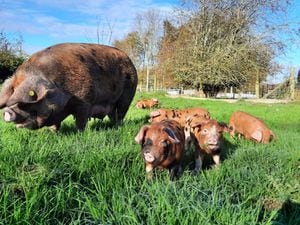Understand silage and get the best from the dairy herd
Maximising growth and utilisation of high quality home grown forages is a key component in driving dairy farm profitability.

Achieving this requires consideration not only on the forage, but also the ability for the cow to make full use of the available nutrients.
There are two aspects of quality with silages - the nutrient value of the crop at harvesting, and how well it is preserved. The first relates to type of crop, fertiliser strategy and crop maturity, as these will determine predicted metabolisable energy, protein, fibre, and sugars. The second is understanding the process of silage preservation.
Silages are preserved by bacteria consuming sugars to produce volatile fatty acids, thus pickling the crop to a stable acid pH. The longer this process takes, the more sugars are used (dry matter and nutrient losses) and more protein is broken down (increased ammonia nitrogen production).
Some natural bacteria in the forage is beneficial, but many are negative to a lactic acid fermentation, which is where an appropriate silage inoculant can be very effective.
Clostridia bacteria thrive in wetter conditions at higher pH and have a large effect on increasing nutrient losses and reducing palatability. Achieving a dryer crop reduces Clostridia lifespan (Clostridia struggle to survive at 35 per cent dry matter) as does a rapid drop in pH.
Very dry crops don’t require such a low pH and have little effect from Clostridia bacteria. However, they tend to be higher in yeast levels, which when subjected to oxygen-produce mould and toxins. Effective rolling and sealing is essential in this scenario, as is an inoculant that can help improve aerobic stability.
Very wet crops can result in significant nutritive and dry matter losses due to effluent production, so cutting drier crops (more than 28 per cent DM, ideally 30-35 per cent DM) or wilting will help reduce this and concentrate sugar levels.
Wetter silages stabilise at lower pH levels than drier silages, so require more acids to be produced, using up more sugars to achieve this.
Key points
- More mature crops will be higher yield but lower quality
- Ideally aim for a quick wilt, but dry matter is critical to quality, preservation and feed out
- Aim for 30 – 35 per cent dry matter
- Clamp quickly, roll and seal effectively
- Use NWF Agriculture Silaguard 50 to help achieve a front-end fermentation with a rapid pH drop in wetter crops and improve aerobic stability on dryer crops
Angus Little, NWF technical sales specialist.





